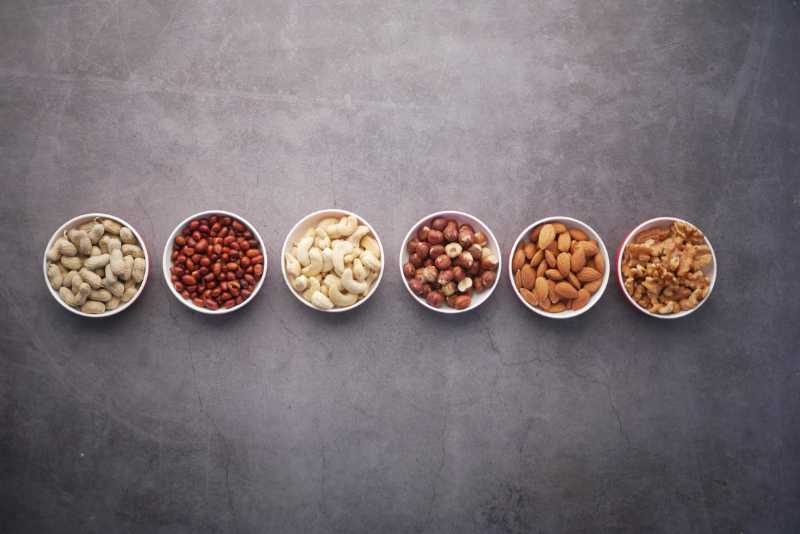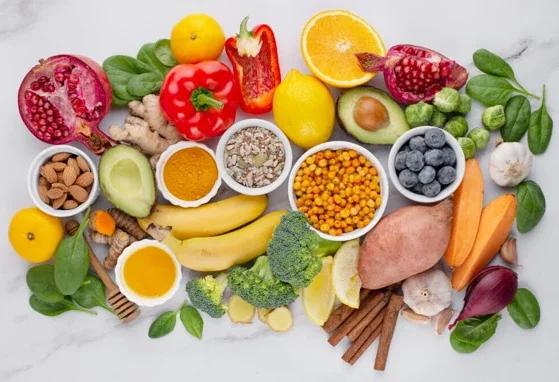Why Africa’s protein intake still lags behind the global average


It’s a fact that inadequate protein intake can affect all aspects of the body’s healthy function, and in extreme cases, it has irreversible health consequences.
According to the U.S. Dietary Reference Intake (DRI), the average adult should consume 0.8 grams of protein per kilogram of body weight, per day, to prevent a protein deficiency. 1 & 2
The good news is that a lot of our foods contain some protein. This may explain why true protein deficiency is rare in developed countries. However, in Africa, undernutrition is a persistent problem and proteins are one of the nutrients whose intake is inadequate. As of 2019, 234 million sub-Saharan Africans were chronically undernourished, more than in any other region. 3
Africa’s protein supply remains low
“A global estimate indicated that, between 1961 and 2013, the protein supply per person in Africa only increased by 31%, which was much lower than advances made in Asia (64%) and the Caribbean (46%) regions. The supply in Africa (69.10 g/capita/day) was also the lowest among all other regions of the world”. 4
Simply put, individuals in Africa are not eating sufficient quantities of protein. 5 & 6 One study found that energy derived from protein remained below 10% in all sub-regions of Africa, except in northern Africa, resulting in protein undernutrition.
Further exacerbating the issue is that in some cases the protein consumed is of relatively poor quality. Protein quality is “an index of how well a protein meets the requirements of essential amino acids, as well as the physiological needs, of the organism. It is based on an amino acid scoring method that compares the essential amino acid content of the protein with the requirement pattern”. 7 In Africa, animal products and cereals (high quality protein sources) constitute a small proportion of the daily diet. 8
Factors that affect protein intake in African populations
 There are a number of factors reported to have an impact on the protein intake of the average African. These factors vary from one region to the next. However, poverty is the most pernicious challenge. In fact, according to the UN’s Food and Agriculture Organisation (FAO), “nearly three-quarters of the African population cannot afford a healthy diet of fruits, vegetables and animal proteins, and more than half cannot afford a nutrient-adequate diet, which provides a mix of carbohydrates, protein, fats, and essential vitamins and minerals to maintain basic health”. 9 The fluctuation of food prices in response to the recent COVID-19 pandemic may have worsened the situation.
There are a number of factors reported to have an impact on the protein intake of the average African. These factors vary from one region to the next. However, poverty is the most pernicious challenge. In fact, according to the UN’s Food and Agriculture Organisation (FAO), “nearly three-quarters of the African population cannot afford a healthy diet of fruits, vegetables and animal proteins, and more than half cannot afford a nutrient-adequate diet, which provides a mix of carbohydrates, protein, fats, and essential vitamins and minerals to maintain basic health”. 9 The fluctuation of food prices in response to the recent COVID-19 pandemic may have worsened the situation.
Other factors that contribute to inadequate protein intake in Africa:
Food security: It’s estimated that 30% of sub-Saharan Africa’s population is food insecure. The development and support of subsistence farming – including financial aid and subsidies to provide for this farming, as well as the provision of modern technology – is recommended, alongside other measures to alleviate poverty and to improve the accessibility and affordability of food. 10
Climate change: Rainfall patterns are expected to vary with increasing frequency. This will affect the availability of fresh drinking water (for human communities and their livestock). Drought and water scarcity will affect food supply, deepening the food insecurity, poverty and hunger experienced by populations in Africa. 11
Education: Lack of education contributes to malnutrition. When individuals do not have basic knowledge about nutrients, they fail to eat the right foods and may be ignorant about the diseases that result from malnutrition. 12
Exploring solutions for improved protein intake
Experts are calling for policy changes that will make basic foods more affordable and more widely available.8 & 13 & 14
Another possible remedy is to establish programmes to boost the production of pest-resistant plant-based protein sources (cowpea and soybean, for example) and then making them more widely available to African communities to supplement their diets.10
The fortification of staple food crops has also been proposed as a viable means to sustainably boost protein supply and intake in Africa. 15
As stated in one study, “nutrition education about locally available protein- and micronutrient-rich plants is particularly effective and sustainable”, and this is something that healthcare practitioners are well positioned to offer their patients. 16
18 protein-rich plant-based foods 2

The foods listed below are all plant-based but have a relatively high protein content.
|
Plant foods |
Serving size |
Calories (kcal) |
Protein (grams) |
|
Tempeh |
½ cup |
160 |
16 |
|
Tofu |
½ cup |
94 |
10 |
|
Lentils |
½ cup |
101 |
9 |
|
Pumpkin |
1 ounce / 28.35 g |
159 |
9 |
|
Black Beans |
½ cup |
114 |
8 |
|
Pinto Beans |
½ cup |
123 |
8 |
|
Soymilk |
1 cup |
132 |
8 |
|
Peanut butter |
2 tablespoons |
188 |
7 |
|
Wheat berries |
½ cup |
151 |
6 |
|
Flax |
1 ounce / 28.35 g |
140 |
6 |
|
Almonds |
1 ounce / 28.35 g |
163 |
6 |
|
Peas |
½ cup |
67 |
5 |
|
Chia |
1 ounce / 28.35 g |
138 |
5 |
|
Artichoke |
1 medium |
100 |
4 |
|
Quinoa |
½ cup |
111 |
4 |
|
Walnuts |
1 ounce / 28.35 g |
185 |
4 |
|
Spinach |
½ cup |
41 |
3 |
|
Oatmeal |
½ cup |
79 |
3 |
By proactively addressing protein intake, the healthcare community can play a significant role in the prevention of diseases.
References
[1] Arnarson, A., 2017. 8 Signs and Symptoms of Protein Deficiency. [online] Healthline. Available at: <https://www.healthline.com/nutrition/protein-deficiency-symptoms#TOC_TITLE_HDR_2> [Accessed 9 November 2021].
[2] Scherr, R., James, K. and Jones, A., n.d. Nutrition & Health Info Sheets for Health Professionals - Protein Requirements. [online] UC Davis Nutrition Department. Available at: <https://nutrition.ucdavis.edu/outreach/nutr-health-info-sheets/pro-protein-requirements> [Accessed 9 November 2021].
[3] Reid, K., 2021. Africa hunger, famine: Facts, FAQs, and how to help | World Vision. [online] World Vision. Available at: <https://www.worldvision.org/hunger-news-stories/africa-hunger-famine-facts> [Accessed 9 November 2021].
[4] Gebremedhin, S. and Bekele, T., 2021. Evaluating the African food supply against the nutrient intake goals set for preventing diet-related non-communicable diseases: 1990 to 2017 trend analysis. PLOS ONE, [online] 16(1), p.e0245241. Available at: <https://journals.plos.org/plosone/article?id=10.1371/journal.pone.0245241> [Accessed 9 November 2021].
[5] Schönfeldt, H. and Gibson Hall, N., 2012. Dietary protein quality and malnutrition in Africa. British Journal of Nutrition, [online] 108(S2), pp.S69-S76. Available at: <https://www.researchgate.net/publication/232737413_Dietary_protein_quality_and_malnutrition_in_Africa> [Accessed 9 November 2021].
[6] Schönfeldt, H. and Gibson Hall, N., 2012. Dietary protein quality and malnutrition in Africa. British Journal of Nutrition, [online] 108(S2), pp.S69-S76. Available at: <https://pubmed.ncbi.nlm.nih.gov/23107550/> [Accessed 9 November 2021].
[7] Kurpad, A., 2013. Protein: Quality and Sources. Encyclopedia of Human Nutrition, [online] pp.123-130. Available at: <https://doi.org/10.1016/B978-0-12-375083-9.00241-5> [Accessed 1 December 2021].
[8] Schönfeldt, H. and Gibson Hall, N., 2012. Dietary protein quality and malnutrition in Africa. British Journal of Nutrition, [online] 108(S2), pp.S69-S76. Available at: <https://pubmed.ncbi.nlm.nih.gov/23107550/> [Accessed 1 December 2021].
[9] Getachew, A., 2021. New report calls for greater food availability in Africa. [online] Aa.com.tr. Available at: <https://www.aa.com.tr/en/africa/new-report-calls-for-greater-food-availability-in-africa/2290467> [Accessed 9 November 2021].
[10] Bjornlund, V., Bjornlund, H. and Van Rooyen, A., 2020. Why agricultural production in sub-Saharan Africa remains low compared to the rest of the world – a historical perspective. International Journal of Water Resources Development, [online] 36(sup1), pp.S20-S53. Available at: <https://www.tandfonline.com/doi/full/10.1080/07900627.2020.1739512?src=recsys> [Accessed 9 November 2021].
[11] GAKPO, J., 2020. FAO predicts global shortage of protein-rich foods - Alliance for Science. [online] Alliance for Science. Available at: <https://allianceforscience.cornell.edu/blog/2020/07/fao-predicts-global-shortage-of-protein-rich-foods/> [Accessed 9 November 2021].
[12] Bain, L., Awah, P., Geraldine, N., Kindong, N., Sigal, Y., Bernard, N. and Tanjeko, A., 2013. Malnutrition in Sub-Saharan Africa: burden, causes and prospects. Pan African Medical Journal, [online] 15. Available at: <https://www.ajol.info/index.php/pamj/article/view/100127> [Accessed 9 November 2021].
[13] 2018. Affordability of Protein-Rich Foods: Evidence from Zambia. [ebook] CDC Investment Works. Available at: <https://assets.cdcgroup.com/wp-content/uploads/2018/12/14110951/Affordability-of-Protein-Rich-Foods-Evidence-from-Zambia.pdf> [Accessed 9 November 2021].
[14] Bai, Y., Alemu, R., Block, S., Headey, D. and Masters, W., 2021. Cost and affordability of nutritious diets at retail prices: Evidence from 177 countries. Food Policy, [online] 99, p.101983. Available at: <https://www.sciencedirect.com/science/article/pii/S0306919220301871> [Accessed 9 November 2021].
[15] Henley, E., Taylor, J. and Obukosia, S., 2010. The Importance of Dietary Protein in Human Health. Advances in Food and Nutrition Research, [online] pp.21-52. Available at: <https://pubmed.ncbi.nlm.nih.gov/20691952/> [Accessed 9 November 2021].
[16] Muller, O., 2005. Malnutrition and health in developing countries. Canadian Medical Association Journal, [online] 173(3), pp.279-286. Available at: <https://www.ncbi.nlm.nih.gov/pmc/articles/PMC1180662/>.
If you liked this post you may also like




